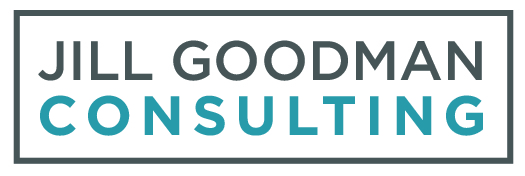Generation Gap or Gaping Divide
Much to my shock and embarrassment, I am struggling with the new understanding that I have been sitting on one side of an ever-widening generational divide. My age, life, and career choices and my knowledge of workplace dynamics are very different from those of millennials or Gen Z. Since many leaders are about my age and many new and hopeful employees are quite a bit younger, the workplace can be fraught with profound misunderstanding.
I’ve watched my millennial children struggle with workplace dynamics and power hierarchies that do not make sense. I also struggled with those things when I was a new college graduate starting my first real job at a dinosaur of a company in a department comprised almost entirely of men twenty years my senior. I endured incidences of harassment, unfair policies, ineffective leadership, and intellectual boredom. The difference is that I thought it was a right of passage, something that I had to master and would make me stronger for the real world of work. My children and their friends do not believe they need to endure microaggressions, weak and ineffective leadership, marginalizing of their ideas, or workplace harassment to get ahead in life. By contrast, they are becoming vocal about injustices that no longer serve the entirety of society, and in some cases, opting out of the impenetrable corporate machine altogether.
A few weeks ago, I had a meeting with a young, female business owner based in Europe about a potential collaboration. But, when the conversation turned to the situation in the US and the anti-racist movement that was again sweeping the country, I realized that the woman saw it through a different generational lens. She probably thought I was tone-deaf, a political ostrich, and a thousand years old. I called my daughter to help me understand what happened. She very gently yet firmly led me to realize that I was, in fact, tone-deaf. The other two assessments are still up for debate.
Dr. Greg Martin, Upper School Dean at Perkiomen School, addressed the idea of attracting and retaining younger faculty in his 2018 article for NAIS titled, “Hiring Practices: Understanding What Millennials and Gen Z Want.” The conversation has become much more nuanced as millennials are speaking up for themselves about workplace injustice and the marginalization of young employees and those who are female or BIPOC, or both.
For example, in this open resignation letter to a leading arts institution, we are reminded of the systemic and underlying problems that plague our workplace culture and make it difficult for millennials to contribute. Younger employees are unwilling to stand by and accept policies, practices, decisions, internal politics, and communication channels that seem incongruous with the organization’s stated mission and philosophy.
How do schools play a role in this disconnect? Part of the disconnect for millennials and Gen Z could lie in the recent shift in education to the focus on the “whole child.” According to the Association of Supervision and Curriculum Development (ASCD), the second tenet of whole-child education is, "Each student learns in an environment that is physically and emotionally safe for students and adults.” Educators, in partnership with parents, teach students that they deserve a seat at the “table,” that their words and actions are valued and worthy of consideration, and that conflicts are resolved through healthy and respectful conversation. Sadly, some leaders of my generation and those older are unwilling to embrace that same idea in the workplace, and workplaces are not always physically or emotionally safe, leaving younger workers confused, angry, and unprepared.
In independent schools, we have an opportunity, one that has already started at many schools through the #blackat Instagram campaigns that alerted school leaders to racism at the school. For school communities that have focused for decades on creating diverse cultures and genuinely believing they were doing good work in this realm, it was devastating, shocking, and a wake-up call that has boards, administrators, and alumni associations scrambling to right these wrongs and move to greater understanding.
We are at a fascinating time of change. Some younger people feel hopeless and as if the world is not fit to live in, in its current state. They cannot imagine how it will get better, though they are intent on trying. Since I am at a different stage of my life, I don’t see it quite the same way, and therein lies the generational divide. The COVID-19 quarantine has brought some physical distance to workplace dynamics. Now younger people see the disconnects, injustices, and inconsistencies that older people hold on to in order to maintain their position of authority. What is hard for millennials and Gen Z to see from their vantage point is the difficulty leaders have in balancing conflicting priorities, the glacial pace of institutional change, and the phenomenal patience and complacency that mediocrity breeds, in addition to the overarching goal to stay in business.
The workplace is shifting, and the degree to which independent schools can shift to meet this new demand will determine their ability to attract, employ, and retain top new talent in the field. Now that we have opened the conversation and started a meaningful dialog about true inclusivity in our practice and policies at schools, now is the time to address how we might be marginalizing our younger teachers and staff members.
The author, Jill Goodman, is a consultant working with independent school leaders to advance their school’s mission, enhance their processes, and bolster their skills.



